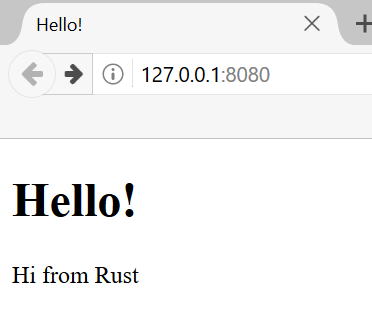Final Project: Building a Multithreaded Web Server
It’s been a long journey, but here we are! It’s the end of the book. Parting is such sweet sorrow. But before we go, let’s build one more project together, to show off some of the things we learned in these final chapters, as well as re-cap some of the earlier ones.
Here’s what we’re going to make: a web server that says hello:

To do this, we will:
- Learn a little bit about TCP and HTTP
- Listen for TCP connections on a socket
- Parse a tiny number of HTTP requests
- Create a proper HTTP response
- Improve the throughput of our server with a thread pool
Before we get started, however, there’s one thing we should mention: if you were writing this code in production, there are a lot of better ways to write it. Specifically, there are a number of robust crates on crates.io that provide much more complete web server and thread pool implementations than we are going to build.
However, for this chapter, our intention is to learn, not to take the easy route. Since Rust is a systems programming language, we’re able to choose what level of abstraction we want to work with. We’re able to go to a lower level than is possible or practical in other languages if we so choose. So we’ll be writing a basic HTTP server and thread pool ourselves in order to learn the general ideas and techniques behind the crates we might use in the future.